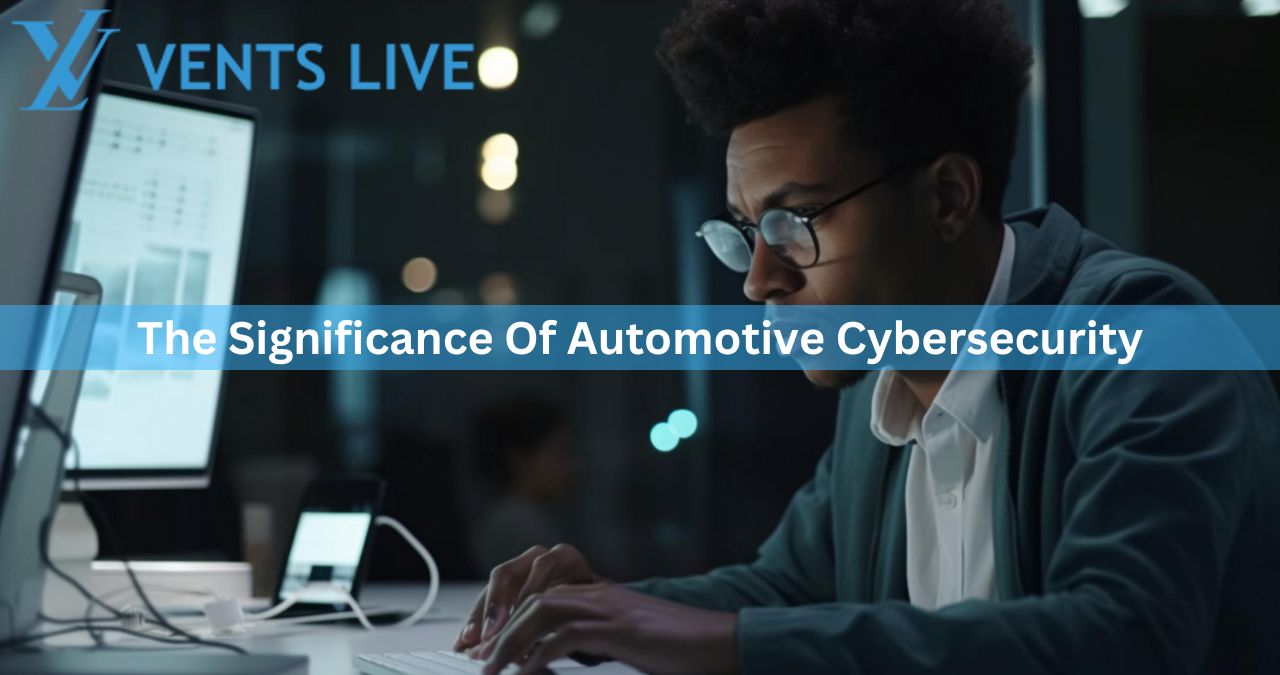Increasing connectivity and reliance on technology in contemporary vehicles have led to the emergence of new risks and vulnerabilities that must be addressed: automotive cybersecurity. The purpose of this article is to examine the significance of automotive cybersecurity by investigating the risks posed by cyber threats, common vulnerabilities in vehicles, and the measures that can be taken to secure vehicle-to-vehicle communication and defend against remote control attacks.
Understanding the Risks of Automotive Cyber Threats
Understanding the risks associated with cyber threats to the automotive industry is essential for developing effective strategies to protect vehicle systems and ensure the safety and security of the automotive industry as a whole. With the increasing connectivity and complexity of contemporary vehicles, the possibility of intrusions on automotive systems has become a major concern. These threats range from unauthorised access to sensitive vehicle data to remote manipulation of critical components, posing grave risks to both driver safety and the automotive industry’s reputation.
Multiple factors, including outmoded software, the absence of secure communication protocols, and insufficient security measures, contribute to the vulnerabilities in automotive systems. In addition, the interconnectedness of vehicles and their integration with external networks exacerbate the potential dangers. Automotive manufacturers, policymakers, and cybersecurity experts must collaborate to identify and mitigate these risks by implementing robust security measures and continuously monitoring potential threats.
Common Vulnerabilities in Modern Vehicles
Modern vehicles are susceptible to remote exploitation via wireless communications, unauthorised access to the vehicle’s internal network, and the implementation of malicious code. Hackers can obtain unauthorised access to a vehicle’s functions by exploiting vulnerabilities in wireless communication systems such as Bluetooth and Wi-Fi. Once inside the vehicle’s internal network, assailants can manipulate critical systems, such as the braking and steering systems, resulting in potentially hazardous situations.
In addition, the presence of software and electronic control units in contemporary vehicles allows for the execution of malicious code. This can occur through various means, including tainted firmware updates and malicious application installation. These vulnerabilities highlight the critical need for comprehensive cybersecurity measures to safeguard the automotive industry from potential cyber threats.
Securing Vehicle-to-Vehicle Communication
Implementing rigorous protocols and encryption mechanisms to ensure the confidentiality, integrity, and authenticity of the exchanged information is required to secure vehicle-to-vehicle communication. As vehicles become more interconnected, secure communication between vehicles is essential to prevent malevolent attacks and safeguard user privacy. Large-scale deployment and administration of cryptographic keys is one of the most significant obstacles in securing vehicle-to-vehicle communication.
These keys are utilised to encrypt and decrypt the data exchanged between vehicles, ensuring that only authorised parties can access the data. In addition, secure protocols must be established to authenticate the vehicles and validate the message integrity. These protocols should resist multiple attacks, including replay and man-in-the-middle attacks. By addressing these obstacles and implementing stringent security measures, vehicle-to-vehicle communication can be protected from potential dangers.
Protecting Against Remote Control Attacks
Implementing robust security measures to prevent unauthorised access and control of vehicles via remote communication channels is necessary to defend against remote control attacks. As vehicles become increasingly connected and autonomous, the possibility of malicious actors gaining remote control of vehicles poses a significant threat to automotive cybersecurity. Remote control assaults can allow hackers to manipulate critical vehicle functions, such as steering, acceleration, and braking, with catastrophic results.
Automakers and cybersecurity specialists are devising advanced security solutions to mitigate these risks. Implementing robust encryption algorithms, authentication protocols, and secure communication protocols ensures the confidentiality and integrity of data transmitted between vehicles and their external systems. To preserve the safety and security of vehicles and their occupants, continuous monitoring and threat detection systems are essential for identifying and responding to potential remote control assaults as soon as they occur.
Importance of Regular Software Updates
Regular software updates are essential for preserving the integrity and functionality of vehicle systems, as well as mitigating potential vulnerabilities. In the context of automotive cybersecurity, software updates are essential for addressing potential security defects and vulnerabilities in the vehicle’s software. These updates frequently include patches and problem fixes designed to defend against identified vulnerabilities and prevent unauthorised access to or control of the vehicle’s systems.
By routinely updating software, automakers can ensure that their vehicles are equipped with the most up-to-date security measures and protocols, substantially reducing the risk of remote control attacks and other cyber threats. In addition, software updates enable manufacturers to enhance the overall performance and efficacy of their vehicles by adding new features and functions.
Implementing Strong Authentication Measures
Maintaining the security of automotive systems requires regular software updates. However, these measures are insufficient against sophisticated cyberattacks. To further improve automotive cybersecurity, it is of the utmost significance to implement robust authentication measures. Multiple layers of security are utilised to verify the identity of users and ensure that only authorised individuals have access to the vehicle’s most sensitive functions and data.
The implementation of biometric authentication, such as fingerprint or iris recognition, as well as the use of secure credentials or digital certificates, may be among these measures. By incorporating such rigorous authentication measures, automakers can substantially reduce the risk of unauthorised access and potential intrusions, thereby protecting the privacy and integrity of both drivers and vehicles.
Collaborating with Industry and Government for Cybersecurity Standards
To ensure the utmost level of security in automotive systems, manufacturers must establish and adhere to standardised cybersecurity measures like ISO 21434 in collaboration with industry and government entities. The automotive industry is becoming increasingly aware of the need for collaborative efforts to combat the expanding cyber threats. By collaborating, manufacturers can exchange information and best practices to develop effective cybersecurity solutions that can be implemented uniformly across the industry.
Collaboration with government entities is also essential, as they can provide regulatory frameworks and best practices that facilitate the adoption of cybersecurity measures. In addition, government agencies can contribute by exchanging threat intelligence and conducting compliance audits. Automotive manufacturers can create a more secure environment that protects vehicles and their occupants from cyber threats by collaborating with both industry and government
Conclusion
Cybersecurity in the automotive industry is crucial for guaranteeing the safety and integrity of modern vehicles. The automotive industry can effectively mitigate cyber threats by comprehending the risks, securing vehicle-to-vehicle communication, protecting against remote control attacks, instituting regular software updates, and enforcing strong authentication measures.
In addition, collaboration with industry and government to establish cybersecurity standards and educate drivers on best practices is necessary for maintaining the security of the identity ecosystem. A comprehensive approach to automotive cybersecurity is essential for protecting vehicles and the individuals who depend on them.




